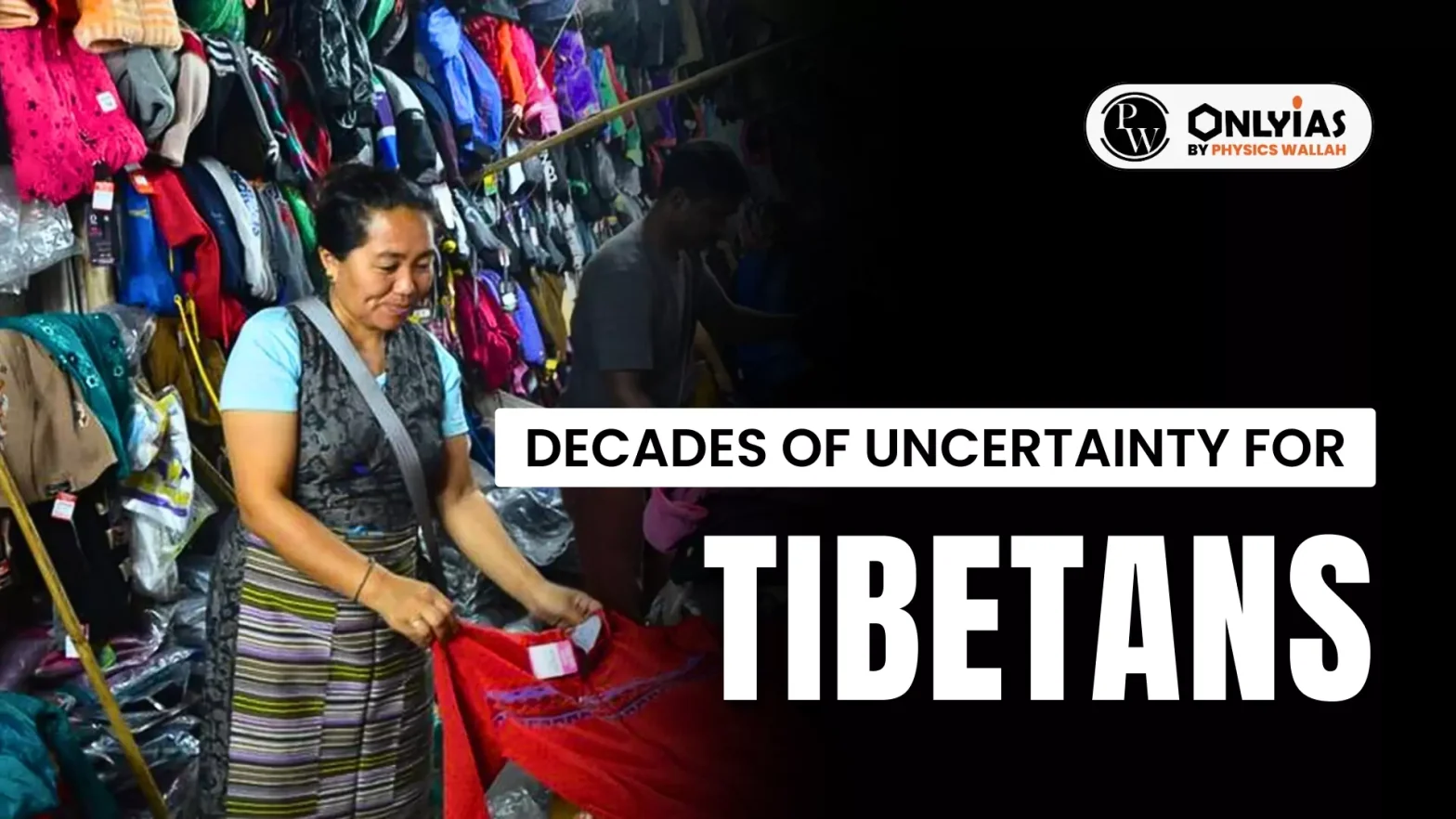Neither foreigners nor refugees. More than 60 years after Tibetans arrived in India in the face of Chinese occupation, their status is in a quandary.
| Relevancy for Prelims: 1951 United Nations Convention on Refugees, registration certificates (RCs), Foreigners Registration Act, 1946, Registration of Foreigners Rule, Major concentration of Tibetan refugees, Citizenship Act, 1955 etc.
Relevancy for Mains: Socio-political and legal challenges faced by Tibetan refugees in India, etc. |
Decades of Uncertainty for Tibetans
In 1959, thousands of Tibetans arrived in India in the wake of the flight of the Dalai Lama.
Enroll now for UPSC Online Classes
- The government provided asylum and assistance towards temporary settlement.
- While they are third-generation settlers now, the future of the Tibetan movement, India’s citizenship laws and India not being part of the 1951 United Nations Convention on Refugees complicate the issue.
- To live in India, they must obtain registration certificates (RCs) applicable to other foreigners under the Foreigners Registration Act, 1946 and the Registration of Foreigners Rule.
- For travelling abroad and entering from Nepal, another set of documents — Identity Certificate (IC) and Special Entry Permits (SEP) — are required.
- In 2016, the Union Ministry of Home Affairs (MHA) changed the norms, making the RC renewal process online and relaxing the period of renewal to five years.
- Officials and Tibetan activists point out that in the past two decades, there has been a record migration of Tibetans to foreign countries.
- According to “The Tibetan Rehabilitation Policy” formulated by the MHA, the Tibetan population in India stood at 1.10 lakh in 2009.
- According to MHA’s 2022-23 Annual Report, “per the latest Census 2019 conducted by Central Tibetan Relief Committee (CTRC), the population of Tibetan refugees in India was 73,404.”
- The Union government formulated the policy in consultation with The Dalai Lama’s CTRC.
- There was a need to revise the policy in the wake of problems faced by the community.
- In 2015, the National Democratic Alliance (NDA) government sanctioned a scheme of providing a grant-in-aid of ₹40 crore to the CTRC for five years. The scheme was extended for another five years.
- A major concentration of Tibetan refugees is in Karnataka (21,324), Himachal Pradesh (14,952 ), Arunachal Pradesh (4,780 ), Uttarakhand (4,829), West Bengal (3,076), and Ladakh (6,989), the MHA report said.
- “There is a creeping sense of uncertainty about their future among young Tibetans.
- Inevitably concerns are about what will happen to them when HHDL is no more as all hopes are centered around him.
- As a result of migration of Tibetans for a variety of reasons, especially young Tibetans from India, the community has shrunk in numbers.
- Since the last elections, the Tibetan Parliament (in-exile), could have shown greater sense of unity, and these divisions add to people’s concerns”, said Amitabh Mathur, former adviser to the MHA on Tibetan affairs.
- Despite several initiatives, a few problems remain unrectified.
- He added that processes governing acquiring a document to travel abroad remain slow.
- Tibetan Legal Association (TLA) says on its website that since 2013, the ICs could be applied online.
- “In the last few years, the process for obtaining ICs has become far more difficult, with delays of two years increasingly common place and some taking as long as three years to be processed.
- Such significant delays of between one and three years in being granted ICs, inevitably cause severe difficulties for Tibetans trying to plan international trips for school or other purposes and opportunities,” TLA said.
- “We are recognised as foreigners living in India. Everything is temporary, we cannot buy properties.
- We have lost half of our population to foreign countries where they acquire citizenship,” Tibetan activist and poet Tenzin Tsundue said.
- “Indian citizenship comes with a caveat, the government says we will have to give up the benefits and our rights to visit the settlements camps.
- Many will not be able to visit their parents who live in camps without permits issued by the government agencies,” he said.
- While the Citizenship Act, 1955 states that those born in India between January 26, 1950 and on or before July 1, 1987, are citizens by birth, there are few Tibetans who acquired Indian citizenship after moving court.
- After a series of court judgments, the Ministry of External Affairs (MEA) in 2018 issued comprehensive guidelines to issue passports to Tibetan refugees, subject to police verification.
- Mr. Tsundue added that no textbooks teach about the Tibetan movement.
- “While we owe gratitude to the government, there is little awareness, that India has recognised Tibet as part of China.
- There was some buzz about the cause after the 2020 Galwan border clash but that is not enough. (Prime Minister Narendra) Modiji has not even met the Dalai Lama,” the Tibetan activist said.
- An All-Party Indian Parliamentary Forum for Tibet (APIPFT) that was active during the 1970s was reconstituted under the Atal Bihari Vajpayee government.
- The APIPFT, mainly comprising Rajya Sabha members that remained inactive since 2011, was revived in December 2014.
Check Out Previous Years Papers From PW Store
Conclusion
Tibetan refugees in India face prolonged uncertainty and bureaucratic hurdles, highlighting the need for policy reforms to secure their rights and future in the country.
![]() 20 Jun 2024
20 Jun 2024

